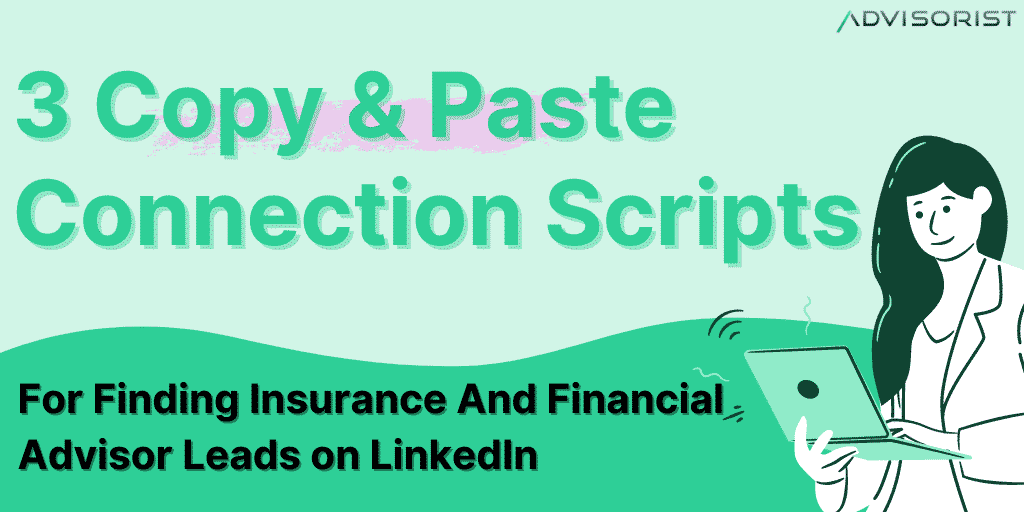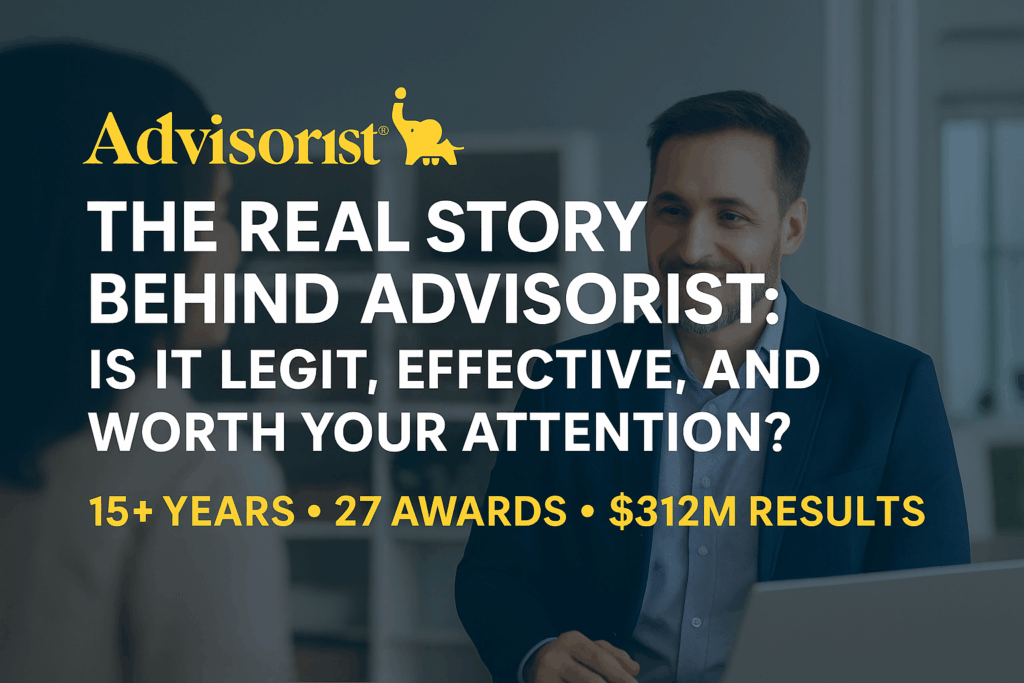
Let me guess…
- You’re tired of getting your LinkedIn connection requests denied;
- You’re not sure what to say once a prospect accepts your request;
- And you’re unclear on the best strategy for nurturing insurance and financial advisor leads over time.
Are you nodding your head…?

I’ve been there.
See…most advisors treat LinkedIn like it’s a game of tiddlywinks, when it’s ultimately a game of chess.
And over the years, I’ve made it my mission to show thousands of advisors how to stop playing around with LinkedIn and finally start MAXIMIZING its value.
Start Winning With LinkedIn (and Access More Insurance and Financial Advisor Leads)
This is the third blog post in a multi-week series teaching insurance and financial advisors how to WIN with LinkedIn.
In case you missed the first couple of weeks, I’d encourage you to go back and review the following two resources:
6 LinkedIn Makeover Tips Advisors Can Use to 2X or 3X results
There are some powerful nuggets in there that hundreds of advisors have already used over the past few days to get some pretty impressive results – like Brent G., who had a presentation and closing of two(!) $1 million AUM cases after optimizing his LinkedIn profile.

And in this installment, we’re going to look at LinkedIn connection requests and how a properly optimized approach can yield insurance and financial advisor leads in droves – including annuity leads, group benefits leads, and financial planning leads.
Let’s do it…
The #1 Killer of Advisors on LinkedIn
I spend a lot of time using LinkedIn, studying LinkedIn strategies, and consulting some of the industry’s top advisors on how to leverage the platform in order to grow their businesses.
And do you know what I’ve found?
Most advisors treat LinkedIn like the “1-Month Wonder.”
They attend somebody’s class, give a tactic a try and then…
…when it doesn’t work RIGHT AWAY…
…they give up.
I’ve seen otherwise successful advisors try the platform out for 30 days and then move on.
There was even a time when I would have put myself in that group.
Early on, LinkedIn was challenging for me.
But as soon as I realized that LinkedIn is a long-term play, everything changed.
And I’m confident that’ll be the case for you, too.
See, the number one killer of advisors on LinkedIn is shortsightedness.
Advisors send a single message and then throw in the towel.
I don’t want that to happen to you.
So before proceeding….will you promise me something?
Will you stick with this?
I’m going to give you some scripts and swipe files that you can use to boost your results, but they take time to seed.
While I certainly see exceptions to the rule, you shouldn’t expect to get results in a few days or weeks. You need to commit to at least three to six months before seeing a noticeable impact.
If you’re willing to give it everything you’ve got, I’d encourage you to proceed…
2 Connection Request Strategies That Are Crushing It
I hope I didn’t lose any of you 🤣…
While LinkedIn is not a get-rich-quick scheme, a patient approach can make it one of the single most effective tools in your advisor arsenal.
And if you want to have the highest chance of developing a real relationship (that ultimately leads to an appointment), you’ll need to focus on the following when reaching out:
- Empathy
A callous or oblivious approach never works, but it’s especially ineffective when you consider the current state of things.
People are feeling anxiety, despair, and worry – so think about what you want to say.
Put yourself in that person’s shoes and approach with care and intentionality.
If you lead with empathy, you’re immediately in the top 10% of advisors on LinkedIn.
90% of your peers really don’t know how to present themselves – and this gives you a massive opportunity to speed past them and connect with people in meaningful ways.
I’d recommend using words and phrases like:
- “Remove the uncertainty”
- “Ease your anxiety”
- “I understand”
There are dozens of similarly appropriate phrases that you could add to this list. Just make sure you’re engaging with purpose. You don’t want to be a tone deaf advisor!
- Specificity
Specificity is the second connection request strategy that’s driving exceptional acceptance rates.
If you’ve taken any of my paid courses or classes over the years, you know what I say…
Specificity converts and generalities tank.
When reaching out, be as specific as possible. Here are some ways to do this:
- Mention how many people you’ve helped.
- Mention the types of people you serve.
- Discuss specific money and time savings.
- Use relevant data and statistics (when natural).
Combined with empathy, specificity will get your message across in a powerful way.
3 Good Connection Request Messages
I’m a big believer in moving fast, testing everything, and iterating to great.
And when it comes to connection requests, I recommend running a simple A/B test.
(Don’t worry, you won’t need any fancy software or expensive tools. Just a simple math equation you can run in your head.)
With the “A Test,” send a connection request with no message. Just click “connect” and be done with it.
With the “B Test,” you’re going to practice empathy and specificity.
Run this test for at least 30 days. (Otherwise there won’t be enough data for a statistically relevant result.)
Then calculate an acceptance rate for the “A” and “B” messages.

The higher percentage is your winning recipe.
(For perspective, industry benchmarks for acceptance rates are right around 20%. Anything below that signals you need to make a tweak. Anything above indicates you’re on the right track.)
Now, even after discussing empathy and specificity, you might be saying, “But Jeremiah…I still don’t know what to say.”
I hear you…
So I’m going to get even more specific by showing you three real life examples of good connection requests I’ve run across recently.
Connection Request Example #1

While this request is clearly automated, the unique sales proposition is totally dialed in. Assuming he’s targeting the right prospects, most on the receiving end of this message will be curious.
With business owners, “lower taxes” is a trigger word.
I wouldn’t be as direct as this guy, but it’s not a terrible message.
Connection Request Example #2
This one is really good.
It’s made even more powerful by the fact that it aligns perfectly with her professional headline.
You don’t need to do much digging to know what she does and what value she provides.
The only thing I would change is the “I’d like to join your professional network” bit. That’s a line straight out of the original LinkedIn default settings from like a decade ago.
Other than that, her request is simple, concise, and very clear.
Connection Request Example #3

If you’re going to send something like this, just save your time and go make some cold calls.
This advisor’s copy sounds robotic and uninspired.
In his defense, it’s probably been run through multiple rounds of compliance…but still…not great.
There are no line breaks.
There’s no personality.
He didn’t use my name.
There’s nothing to create a relationship.
And don’t even get me started on the curious use of hashtags…
This message is cold, callous, and guaranteed not to convert.
Don’t be this guy.
Claim Your FREE Message Swipe Files [PDF]
If you want to win with LinkedIn and generate meaningful insurance and financial advisor leads, you need to learn how to craft copy that converts.
And if you’ve read this far into the blog post, I know that you’re capable.
But here’s the deal…
I really want you to give this a try, so I’m going to provide you with a few killer examples of real-world follow up messages that I’ve seen on LinkedIn.
These are messages that are converting RIGHT NOW.
All you have to do is pop your email into the form below and I’ll send you FREE COPY & PASTE FOLLOW UP MESSAGES that will have prospects punching that REPLY button like it’s a slot machine.
I’ll have it in your inbox in no time.
[cboxarea id=”cbox-wYLD5JyuRdh0oy20″]
Book Your LinkedIn Marketing Strategy Call
Want to find out how advisors like H.P. Inkhom have gone from five meetings a month to 19 per month with more than $239,000 in commissions in the pipeline – all while going 100% virtual?
You need to book a LinkedIn Marketing Strategy call.
We’ll show you precisely how to pivot to virtual meetings and generate MORE meetings with LESS time and wasted energy.





